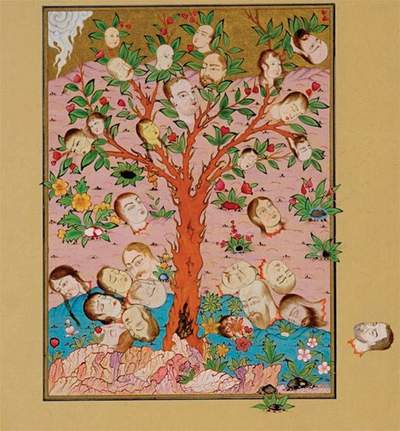Çınar Incident on:
[Wikipedia]
[Google]
[Amazon]
 Çınar incident (''
Çınar incident (''
On line history
/ref>
 Çınar incident (''
Çınar incident (''Platanus
''Platanus'' is a genus consisting of a small number of tree species native to the Northern Hemisphere. They are the sole living members of the family Platanaceae.
All mature members of ''Platanus'' are tall, reaching in height. All except ...
Incident'') is the name of a 17th-century rebellion in the Ottoman Empire
The Ottoman Empire, * ; is an archaic version. The definite article forms and were synonymous * and el, Оθωμανική Αυτοκρατορία, Othōmanikē Avtokratoria, label=none * info page on book at Martin Luther University) ...
. It is also sometimes known as "The Event of the Vakvak" (''Vakʿa-ı Vakvakiye''), named after a mythical tree on which human beings grew, as an analogy to the corpses hung from trees in the aftermath of the rebellion.
Background
During theCretan War (1645–1669)
The Cretan War ( el, Κρητικός Πόλεμος, tr, Girit'in Fethi), also known as the War of Candia ( it, Guerra di Candia) or the Fifth Ottoman–Venetian War, was a conflict between the Republic of Venice and her allies (chief among ...
, military expenditures of the Ottoman Empire increased, and the empire began experiencing economic difficulties. Sultan Mehmet IV
Mehmed IV ( ota, محمد رابع, Meḥmed-i rābi; tr, IV. Mehmed; 2 January 1642 – 6 January 1693) also known as Mehmed the Hunter ( tr, Avcı Mehmed) was the Sultan of the Ottoman Empire from 1648 to 1687. He came to the throne at the a ...
was only a teenager and the regent, Valide Sultan #REDIRECT Valide sultan
{{redirect category shell, {{R from move{{R from miscapitalization{{R unprintworthy ...
(mother queen) Turhan Hatice and the short term grand viziers, could not find a solution. Especially after the execution of the reformist grand vizier Tarhoncu Ahmet Pasha, who tried to cut back palace expenditures, the only solution proposed was a devaluation
In macroeconomics and modern monetary policy, a devaluation is an official lowering of the value of a country's currency within a fixed exchange-rate system, in which a monetary authority formally sets a lower exchange rate of the national curre ...
.Prof.Yaşar Yücel-Prof Ali Sevim:''Türkiye tarihi III'', AKDTYKTTK Yayınları, 1991, pp. 111-120 So, the ratio of gold in coins was reduced. The new coins minted were known as "red coin". The salaries were paid in the red coins. But even then, payment to some soldiers was delayed as much as nine months. Besides, the markets in İstanbul
)
, postal_code_type = Postal code
, postal_code = 34000 to 34990
, area_code = +90 212 (European side) +90 216 (Asian side)
, registration_plate = 34
, blank_name_sec2 = GeoTLD
, blank_in ...
refused to accept the red coins.
Incident
A group of soldiers, who had returned fromCrete
Crete ( el, Κρήτη, translit=, Modern: , Ancient: ) is the largest and most populous of the Greek islands, the 88th largest island in the world and the fifth largest island in the Mediterranean Sea, after Sicily, Sardinia, Cyprus, ...
in 1656, sent their representatives to the Palace and demanded payment of their salaries. But the representatives were expelled from the palace by Osman Aga, a senior palace guard. This triggered a rebellion on 26 February 1656. The rebels asked to meet with the sultan on 4 March. Such meetings were known as "''ayak divanı''" (literally: "meeting with folk"). During the meeting, they presented a list of 30 men, whom they thought to be responsible for the economic crisis, and they wanted all to be executed. The young sultan accepted to dismiss some of these, including Osman Aga, but he tried to save their lives, but the angry rebels were not satisfied. They killed most of the people whose names were on the list, hanging them on a big platanus
''Platanus'' is a genus consisting of a small number of tree species native to the Northern Hemisphere. They are the sole living members of the family Platanaceae.
All mature members of ''Platanus'' are tall, reaching in height. All except ...
tree ( tr, çınar)./ref>
Aftermath
The Çınar Incident showed the regent Valide Sultan Turhan the urgent need of an able administration. Before the Çınar Incident, ten grand viziers had been appointed in a rapid sequence in eight years between 1648 and 1656, since Mehmet's accession. Short term grand viziers were ineffective in solving the problems of the empire. So, she finally appointed Köprülü Mehmet Pasha as the new grand vizier in the following September. Köprülü Mehmet accepted the post only after Turhan promised not to interfere with his administration. It soon became clear that Köprülü Mehmet was a wise choice.Also see
*Köprülü era
The Köprülü era ( tr, Köprülüler Devri) (c. 1656–1703) was a period in which the Ottoman Empire's politics were frequently dominated by a series of grand viziers from the Köprülü family. The Köprülü era is sometimes more narrowl ...
* Al-Wakwak
Al-Wakwak ( ar, ٱلْوَاق وَاق '), also spelled al-Waq Waq, Wak al-Wak or just Wak Wak, is the name of an island, or possibly more than one island, in medieval Arabic geographical and imaginative literature.
Identification with civi ...
* Sultanate of Women
References
{{DEFAULTSORT:Cinar Incident 17th century in Istanbul Rebellions against the Ottoman Empire 17th-century rebellions Conflicts in 1656 Military history of Istanbul 1656 in the Ottoman Empire